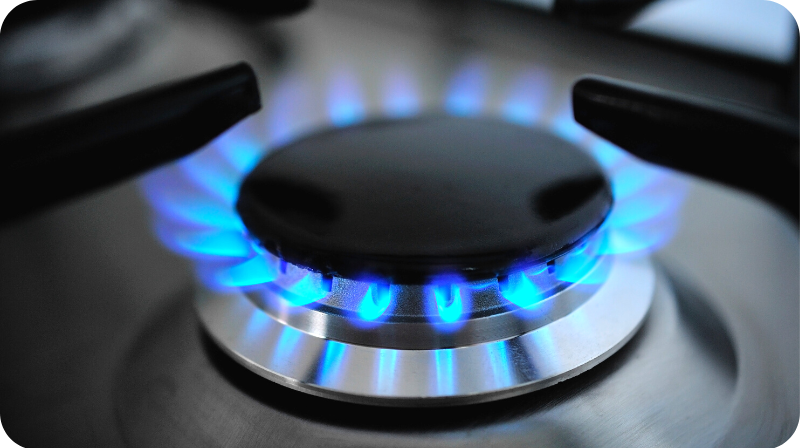Avid cooks and professional chefs alike have long prized gas stoves. These appliances have traditionally offered much more refined control over heat when sauteing, cooking, or baking, than electric stoves and cooktops offer. High-end kitchens have typically been outfitted with expensive, multi-featured gas stoves as a sign of luxury and opulence.

In terms of health, that may be a false impression. The issue was thrust into the spotlight in late 2022, when a member of the Consumer Product Safety Commission called the appliances a “hazard.” Right-leaning legislators quickly homed in on the comment as indication of a potential government ban (no ban is currently being considered), turning a health concern into a partisan political issue.
Make no mistake, though, a wealth of evidence indicates that gas stoves may contribute to or exacerbate respiratory illnesses, especially in children.
Any process that produces energy also creates waste. In our bodies, energy production through respiration creates waste carbon dioxide. Gas stoves leak non-toxic methane before burners are ever lit, and a number of toxic gasses and airborne contaminants once they are. All of these compromise indoor air quality. The situation is worse in homes with inefficient ventilation and, ironically, well-insulated energy-efficient structures with extremely low air leakage.
The Potential Harm
Energy advocacy firm RMI has described the toxic effects gas stoves can potentially have on children, in a detailed 2020 report on the subject.
The report focused on one of the byproducts, nitrous dioxide (one of several nitrogen oxides produced by burning natural gas), and its destructive impact on juvenile respiratory systems. A meta-analysis published in a 2013 issue of the International Journal of Epidemiology had already found that children who lived in households with gas stoves were 42 percent more likely to experience respiratory issues and illnesses, than their counterparts who lived in homes with electric appliances.
Research continues but a good amount of evidence exists that gas stoves may be a particularly bad choice in poorly or under-ventilated homes and kitchens, and for residents who are already suffering from respiratory illnesses or conditions.
However, before you rush off to dismantle your gas stove, be clear the research is not conclusive. Newer appliances burn gas more efficiently, and are less likely to leak through plumbed connections. Homes with powerful vent fans over stoves or cooktops, or generally strong ventilation systems that clear the volume of air in interior space at least three times per hour (or any home with HEPA technology air filtration) are likely safe from most detrimental effects of gas stoves.
Still, if you or a member of your family suffers from COPD, asthma, or similar conditions, there are several steps you can take to protect your indoor air quality.
If You Have a Gas Stove
These are good general steps you can take to protect your indoor air quality.
- Vent. Any kitchen should be equipped with a vent fan. Ideally, that fan should draw through a hood over the cooking surface and be rated for at least 100 CFM for every linear foot of cooktop (250 CFM for the average 30-inch-wide cooktop). Regularly clean any filter in the hood or fan to ensure efficient venting.
- Purify your air. A whole-house or kitchen room air purifier is perhaps the best way to ensure high quality indoor air. Make sure the purifier is rated with the proper CFM for the square foot of the room or area that it is serving (many manufacturers include a simple chart on the unit’s box to calculate this). Also make sure that purifier air filters are replaced or cleaned on the schedule recommended by the manufacturer.
- Consider replacement. Now may be the best time to replace a gas stove. The Inflation Reduction Act passed in 2022 provides a substantial rebate—up to $840—on the purchase of a new electric stove. Consumers may be surprised to learn that today’s electric stoves offer much more flexibility and cooking features, putting the new units on par with existing gas stoves.
Whenever you’re assessing a public health issue like gas stoves, it’s wisest to put aside any political talking points (regardless of the side they’re coming from) and focus on science and the advice from trusted sources such as medical research facilities, the CDC, and other knowledgeable authorities. No matter what your heat source, the best way to cook is “safely.”
Share some love if you like this post!





